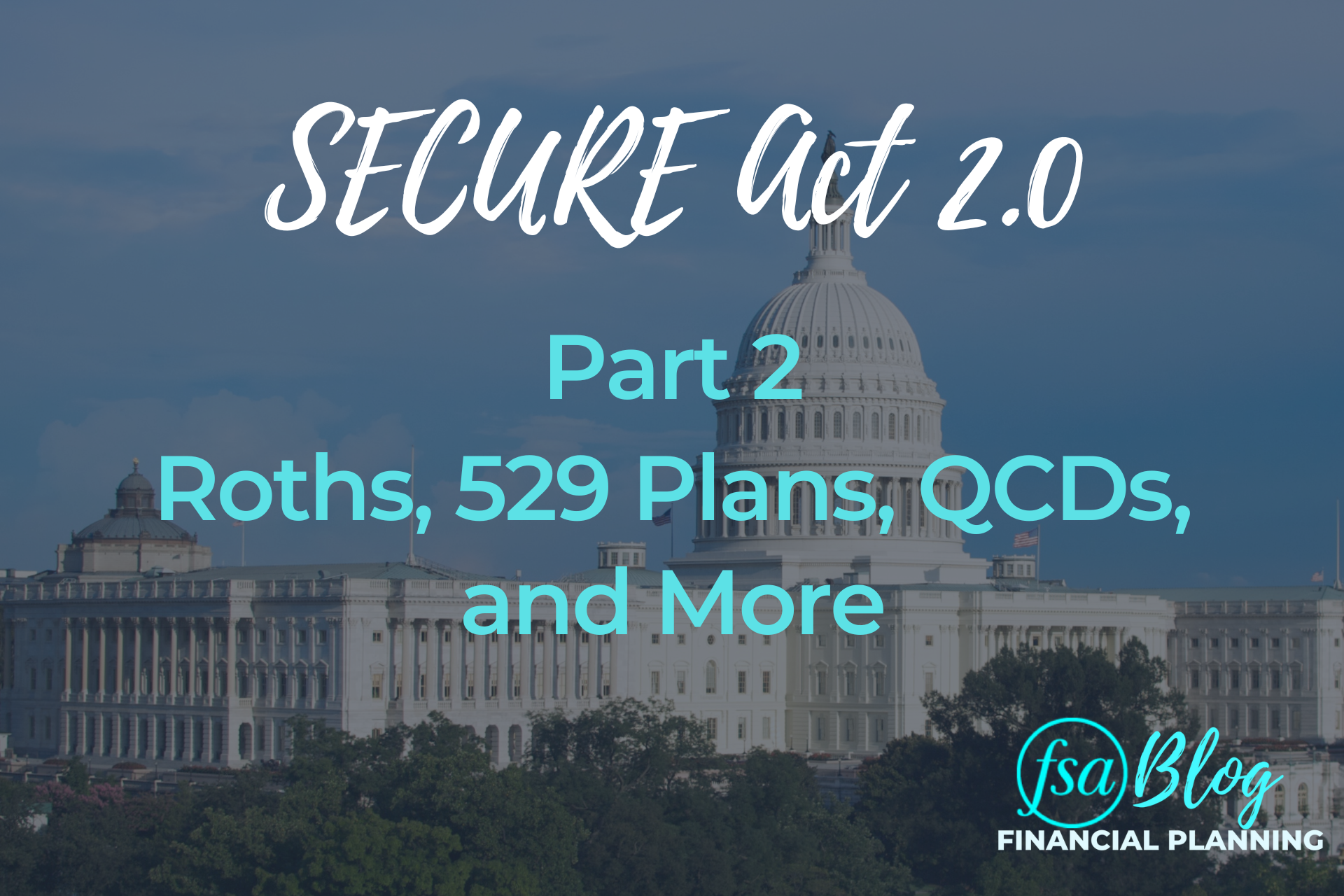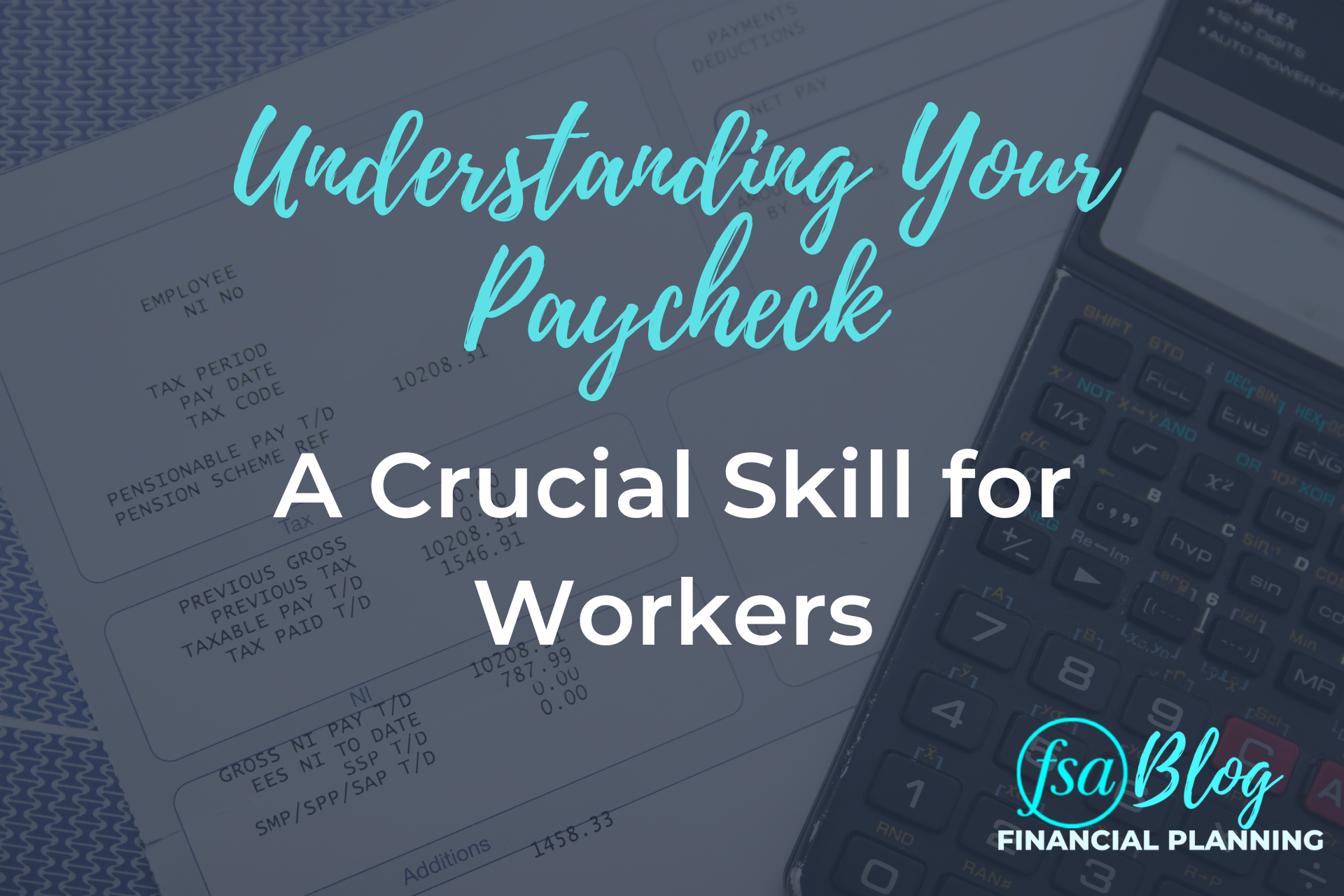And we are back with this part 2 blog post about the changes made in the SECURE Act 2.0. This time around, we’ll cover modifications to Roth accounts and 529 plans, review the new inflated federal tax brackets, and a few other adjustments. Let’s dive right in.
Roth Accounts Receive Some Upgrades
In the past, Roth 401ks had required minimum distributions (RMDs), similar to traditional 401ks and IRAs. Effective 2024, Roth 401ks will be joining their Roth IRA brethren in no longer having mandatory distributions. In most cases once you start taking RMDs, you cannot stop them even if the law changes. In this case, Roth 401k owners can stop taking mandatory withdrawals in 2024.
In other Roth news, Simple and SEP IRAs now have an option to elect for Roth contributions. Effective 2023, business owners can save for retirement in tax-free fashion after paying taxes up front on the income. Despite being available now, there may be some growing pains for this option. Business owners will still have to wait for custodian adoption and IRS guidance on the formal “election.”
Also, employer contributions to qualified retirement plans can now be made in a Roth fashion. This is effective immediately, but there are some stipulations. Roth contributions are only valid for matching or nonelective contributions from the employer (NOT profit-sharing contributions), and the employer contributions must be nonforfeitable, which we assume means fully vested. Lastly, the employer Roth contributions will be considered W-2 income for the employee.
Plans Become More Flexible
In the past, there’s been some hesitation about contributing to 529 plans because the funds must be used for education expenses to avoid taxation and penalties. Well, effective 2024, you can roll over 529 funds into a Roth IRA. Before you get too excited, let’s review the rules:
- The funds must move directly from a 529 account to a Roth IRA.
- The funds must go to the 529 beneficiary’s Roth IRA.
- The 529 account must be open for 15 years before the rollover can occur – if it makes sense, open the 529 account ASAP to get the clock started!
- You can only roll over up to the maximum annual contribution limit (in 2023 this is $6,500) and there is a $35,000 lifetime maximum per beneficiary.
- The beneficiary must have “compensation” for the rollover to occur.
- Any contributions to the 529 plan within the last 5 years are ineligible for rollovers.
Qualified Charitable Distributions (QCDs) Are Now Indexed for Inflation
As discussed in our part 1 blog post, the RMD age was increased to 73; however, the QCD age remained the same at 70.5. One update QCDs received is that, starting in 2024, the maximum amount will be indexed for inflation. In prior years, the maximum amount of charitable checks from an IRA a retiree could do is $100,000.
Tax Brackets Increase
While this was not part of the SECURE Act, we thought this was good information to share. The federal tax brackets received a healthy inflation adjustment going into the 2023 tax year. To clarify, the actual tax rates did not increase, only the income for those brackets increased.
Mandatory Auto Enrollment
This is an interesting one for qualified retirement plans. Starting in 2025, employer-sponsored retirement plans will be required to adopt auto-enrollment, meaning employees will automatically start contributing to their 401ks via payroll deductions. The initial default contribution rate must be at least 3%, but not greater than 10%. The plan must auto-escalate by 1% annually to at least 10%, but no greater than 15%. There are several companies exempt from this new rule:
- Plans in existence prior to enactment of the SCURE Act 2.0
- Government plans
- Church plans
- Employers with ten or less employees
- Employers who have existed for less than three years
- SIMPLE plans
What Does This Mean for You?
That wraps up the biggest updates from the SECURE Act 2.0. Again, we feel that lawmakers had intentions to make it easier for people to save for retirement. Roth accounts have been all the rage the past few years, so they made Roth accounts more available.
All of this information is great, but unless you know how to use the changes to your advantage, it is just noise. We are here to help clients determine how to utilize the new legislation to their benefit. If you have any questions, you can send an email to questions@FSAinvest.com or click here to schedule a call with one of FSA’s CERTIFIED FINANCIAL PLANNER™ professionals.
FSA’s current written Disclosure Brochure and Privacy Notice discussing our current advisory services and fees is also available at https://fsainvest.com/disclosures/ or by calling 301-949-7300.





